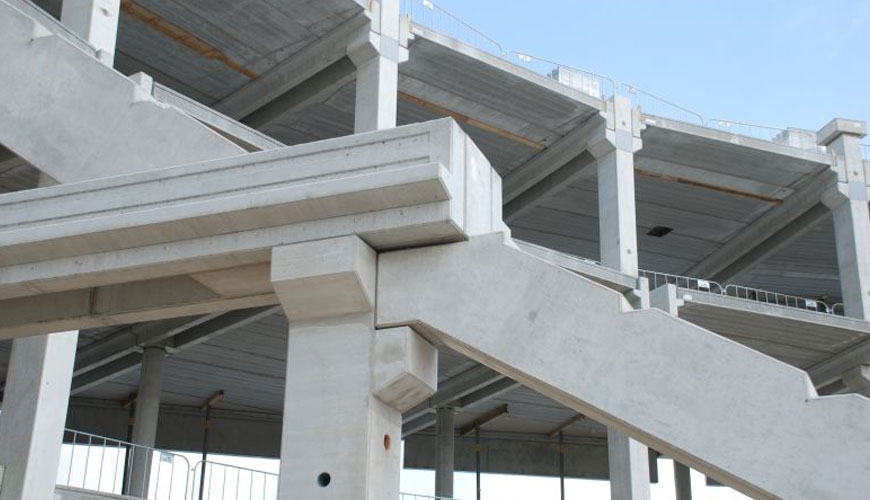

EUROLAB, with its state-of-the-art accredited laboratories and expert team, provides precise and fast testing services within the scope of EN 12504-4 testing. This standard specifies a method for determining the propagation velocity of ultrasonic longitudinal waves or pulses of ultrasonic transverse waves in hardened concrete, used for a range of applications.

Longitudinal or transverse vibrational pulses are generated by an ultrasonic transducer held in contact with a surface of the concrete under test. After traveling a known path length in the concrete, the vibration pulse is converted into an electrical signal by a second ultrasonic transducer, and an electronic timing device enables the pulse transit time to be measured.
Ultrasonic testing equipment consists of an electric pulse generator, a double transducer, an amplifier and an electronic timing device to measure the time interval between the beginning of the pulse generated in the transmitting transducer and the beginning of its arrival at the receiving transducer. A reference rod or prism is used to zero the instrument or to provide a reference point for velocity measurement.
Ultrasonic testing equipment must be able to determine the transit time of the first front of the pulse with the lowest possible threshold, even if it is small compared to the amplitude of the first half-wave of the pulse.
There must be adequate acoustic coupling between the concrete and the face of each transducer. For most concrete surfaces, the surface is smooth enough to provide good acoustic contact by using a bonding medium such as petroleum jelly, grease, mild soap and kaolin/glycerol paste and pressing the transducer against the concrete surface.
Repeated readings of the transition time should be made until a minimum value is obtained indicating that the thickness of the binder has been minimized. When the concrete surface is too rough, the surface area should be leveled and leveled by grinding or using a fast-curing epoxy resin.
EUROLAB assists manufacturers with EN 12504-4 test compliance. Our test experts, with their professional working mission and principles, provide you, our manufacturers and suppliers, the best service and controlled testing process in our laboratories. Thanks to these services, businesses receive more effective, high-performance and quality testing services and provide safe, fast and uninterrupted service to their customers.
To get an appointment, to get more detailed information or to request an evaluation, you can ask us to fill in our form and reach you.